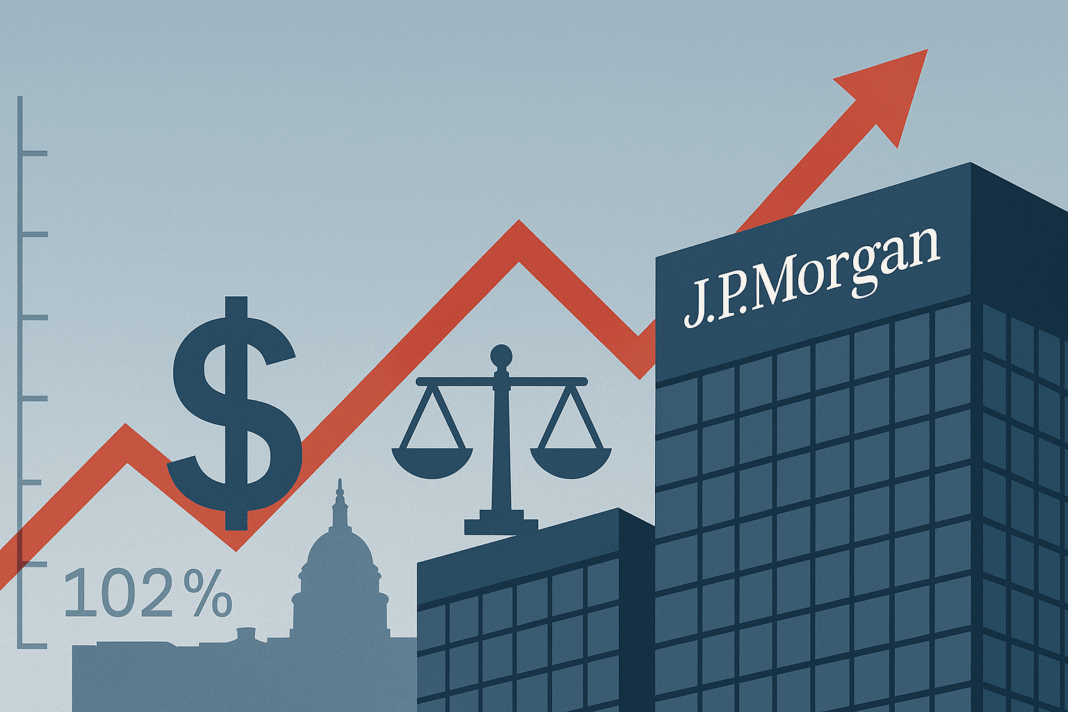America is “going broke slowly,” with rising deficits and interest payments on its debt set to push federal obligations up and dampen long-term returns, J.P. Morgan Asset Management asserts.
Kelly quotes the Congressional Budget Office estimate of the federal deficit during fiscal 2025 at approximately $1.809 trillion, or 6.0% of GDP, a hair below the previous year, estimated by the Congressional Budget Office. He quotes a one-time accounting change of $234 billion relating to federal student loans reduced reported expenditures; excluding it, the 2025 deficit was approximately $2.043 trillion, or 6.7% of GDP.
In the coming years, Kelly estimates the deficit will grow to about $2.132 trillion (6.7% of GDP) in the current year as net interest payments rise from about $980 billion to about $1.046 trillion and the debt level rises. He states that public debt stood at almost $30.3 trillion—around 99.9% of GDP—at the end of FY2025 and may rise to around 102.2% in the next 12 months if nominal growth is around 4.5% and deficits remain above that rate. Markets still think that the government still has a bit of room to borrow—using a 30-year Treasury rate of about 4.6%—but a more precipitous fall can push long-term yields up and weaken the dollar, according to J.P. Morgan Asset Management.
Policy choices could change directions. Kelly’s baseline assumes ongoing monthly tariff revenues; that could be otherwise if the Supreme Court decides that recent tariffs imposed under the International Emergency Economic Powers Act exceeded presidential authority, an argument reiterated by the Congressional Research Service. A decision against the tariffs could force a new legal route for trade measures and even induce refund obligations.
Tax timing comes into it as well. Kelly describes how the One Big Beautiful Bill Act (OBBBA) has additional impact in FY2026 because new individual tax incentives come fully into effect and show up as bigger refunds next year, guidance the Internal Revenue Service has stated for withholding adjustments.
Other than this year, Kelly predicts deficits continuing to be in the 6%–7% of GDP range over the next ten years if short-term OBBBA policies are continued, raising the debt ratio by some two points every year. Recessions, new expenditures, or other tax cuts will push borrowing even higher. He also cautions that deep rate cutting to save on interest costs will ultimately harm by weakening the dollar and adding to inflation, eventually forcing tighter policy.
Bottom line: the budget outlook isn’t an immediate crisis but the math is pointing in the wrong direction. As debt is nearly as big as the economy and interest payments are on the increase, policy or market surprises have the potential to turn a slow grind into a faster squeeze, according to J.P. Morgan Asset Management.
A global media for the latest news, entertainment, music fashion, and more.















